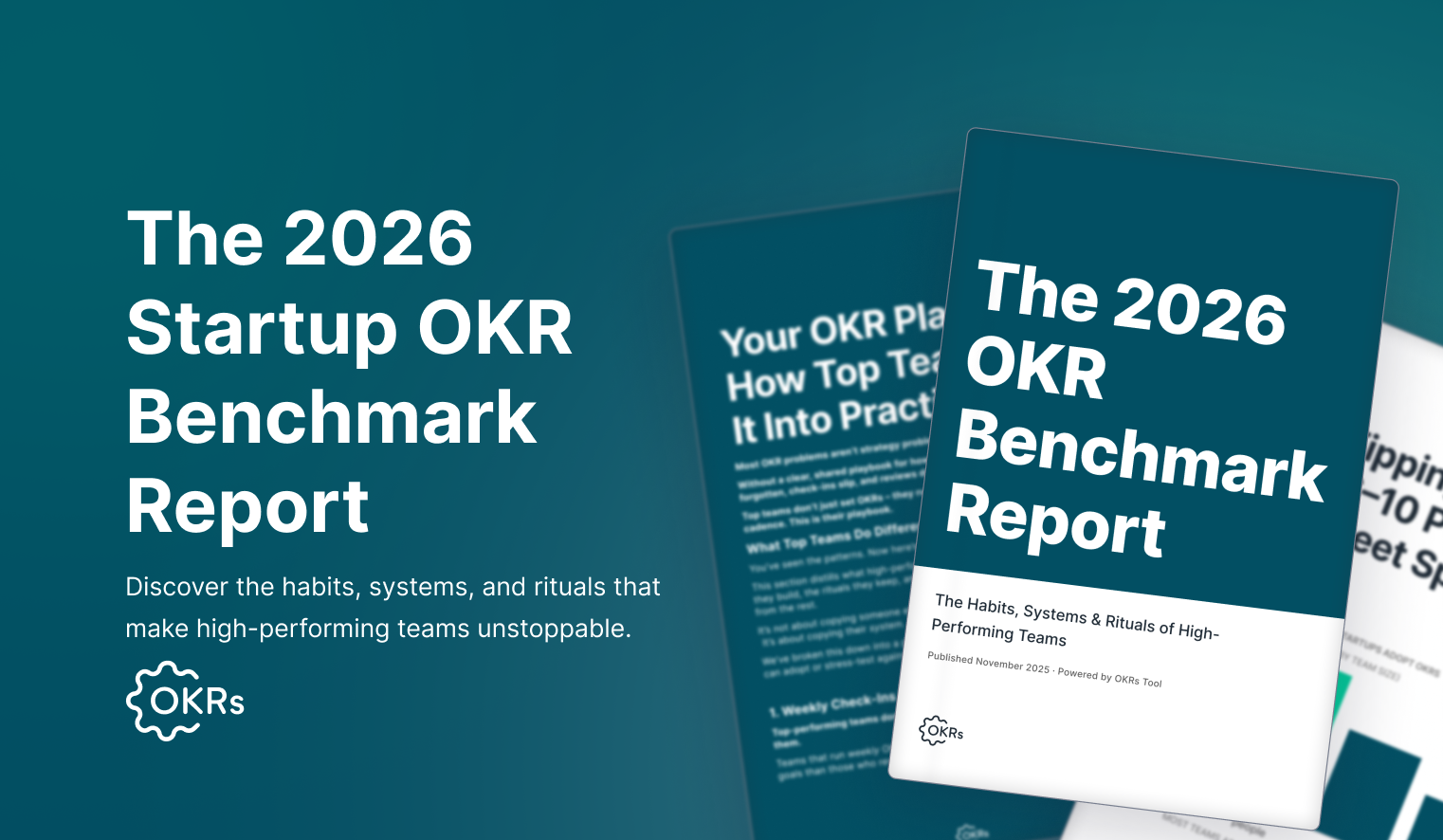New research from 200+ startup teams reveals what’s really behind OKR success - and why most companies still struggle to make them work.
In the early stages, startups don’t fail because they lack ambition - they fail because they lack alignment.
Everyone’s sprinting, shipping, iterating.
But without a shared system, all that speed turns into noise.
To understand how fast-growing teams actually make OKRs stick, we analyzed responses from 200+ early- to growth-stage startups using OKRs across product, engineering, and operations.
The results? Not theory or best practices - real data on what the highest-performing teams do differently.
What You’ll Learn:
- The three habits that separate OKR success from failure
- The systems that drive completion (not just confidence)
- Why two out of three teams still miss the alignment mark
- And what the top 25% do to stay focused - every quarter
What the Data Reveals
Our study examined data from over 200 startup operators, team leads, and founders to understand what separates high-performing OKR teams from the rest.
Here’s what we found:
- Teams that check in weekly complete 43% more OKRs.
- Assigning a single owner per OKR leads to 26% better results.
- Teams that launch OKRs in under a week achieve up to 50% more success.
- 65% of teams admit their OKRs aren’t tied to company goals.
- Teams that skip retrospectives complete 30–45% fewer OKRs.
- Startups in their first two OKR cycles lag by 20% compared to more mature teams.
The pattern is clear: OKRs fail because there’s no rhythm to sustain them.
What the Best Teams Do Differently
After analyzing hundreds of cycles, five habits consistently stood out among teams that make OKRs work.
1. They Review Progress Weekly
The best teams don’t treat OKRs as quarterly checkboxes - they treat them like part of their workflow .
Weekly check-ins create focus and accountability. Teams that keep OKRs visible during standups, sprint reviews, or Monday planning sessions complete 43% more goals. It’s not extra work; it’s about integrating OKRs into existing routines so progress never goes unnoticed.
2. They Assign a Single Owner
Shared ownership sounds collaborative, but in practice, it leads to confusion.
Teams where each objective and key result has one clear owner consistently perform better - about 26% higher completion on average. That doesn’t mean the owner does all the work. It means one person is responsible for ensuring progress happens.
Ownership creates focus, and focus drives results.
3. They Launch Fast
The most successful teams don’t overthink their rollout. They ship fast - often setting their OKRs within a week.
Teams that spend weeks planning or waiting for the “perfect” template lose momentum before they even begin. In contrast, fast-moving teams iterate quickly and complete up to 50% more goals.
The best OKR systems evolve. You learn by doing, not by designing.

OKRs Work When the System Works
The findings above come from the 2026 OKR Benchmark Report, a new analysis of how real startups use OKRs - not what theory says, but what practice proves.
Inside, you’ll find:
- The cadences that drive the highest success rates
- How many OKRs per team actually work
- The tools top performers rely on
- Common failure points (and how to fix them)
If you’re scaling your startup and OKRs haven’t quite “clicked,” don’t throw out the framework - fix the system around it.
Because in the end, OKRs don’t create great teams. Great systems do.






